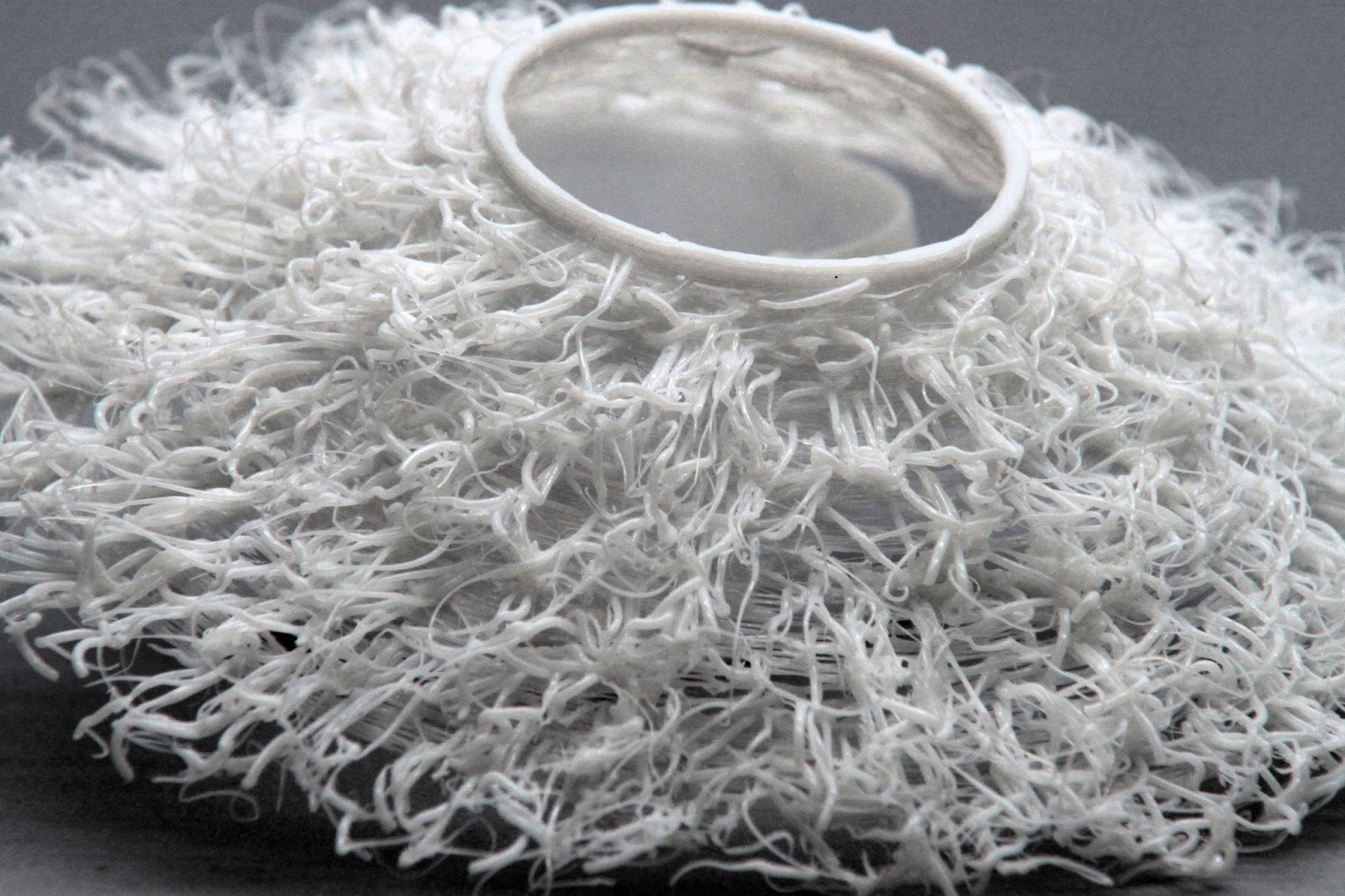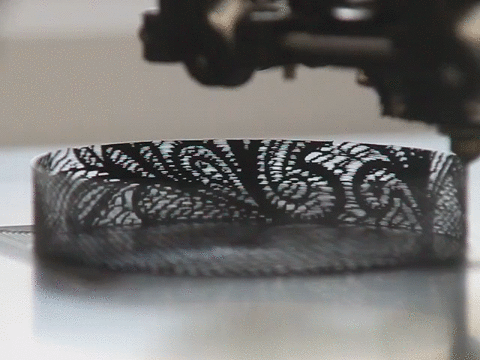Researchers from the University of West England’s Centre for Fine Print Research (CFPR), located in Bristol, UK, are working with a six-axis Mitsubishi Electric MELFA RV-Series articulated arm industrial robot to create a novel form of expressive 3D printing.
With its use of complex geometrical shapes, additive manufacturing has the ability to produce unique objects not easily made through traditional methods. Researchers at CFPR aims to further unlock the artistic capabilities of 3D printing by controlling extruder movements on a customized printing system.
“Conventionally 3D Printers are machines with three linear axis (XYZ) and fabrication occurs in fixed horizontal layers,” said Dr. Paul O’Dowd, Research Fellow at the CFPR.
“The Mitsubishi Electric robot arm is very dexterous, allowing the robot to manipulate materials from all directions [and] has both freedom of movement and a comprehensive set of expansion capabilities.”
A new 3D printing aesthetic
In 2015, Dr. O’Dowd, who specializes in creative electronics and engineering, began investigating the relationship between robotics and artforms.
“What i’m interested in is how robots can interact with the world, perceive the world, and make their own intelligent decisions and I think art, in particular, is interesting as it contains a lot of nuances.”
Recognising the increased demand for high-quality 3D printing technologies, O’Dowd and colleagues from the UWE have connected an articulated arm industrial robot to a print generation system with the intentions of establishing a new aesthetic that surpasses the rigidity of the automated workflow of 3D printing.

According to the CFPR researchers, the main challenge of 3D printing stems from the controlled digital processes of fabrication; when an object is fabricated the shape must be broken down into a series of machine tool paths that gather material by building up layers.
As 3D printing is generally precise in terms of movement and the deposition of materials, it has been able to produce a wide range of previously unattainable structures which have been later used within industrial applications, such as construction. For example, previously, Overtec,3D printed individual complex layered components to be installed on buildings and shop floors.

Material manipulation
To achieve new 3D printed artist forms, the project is using the robot arm to research technologies and techniques to sense and manipulate PLA materials in dynamic ways. The robot is operated by printer paths through proprietary software developed by the CFPR.
The CFPR research team has compared this project to a potter’s wheel, where the artist works in direct contact with clay, thus understanding the constraints of working the material.
“By pushing 3D printable materials to their limits, we have exposed unexpected properties in the materials,” added Dr. O’Dowd.
“For instance, plastic deposition can be manipulated whilst it is hot and pulled into hairs, or fine gauss, or woven. Ceramics can also be deposited so that the material composition is capable of self-glazing in a single firing (as opposed to multiple firing processes). These material states may have applications in wider industry.”
Dr. O’Dowd and the CFPR research team are now further developing their proprietary software to better interpret changing material properties. In addition, the team will conduct similar tests for developing artistic creations using ceramics and photo-cure resins.

Keep up with the latest news in 3D printing by subscribing to the 3D Printing Industry newsletter. Also, follow us on Twitter, and like us on Facebook.
Looking for new talent or seeking a career change? Search and post 3D Printing Jobs for opportunities and new talent across engineering, marketing, sales and more.
Featured image shows an 3D printed object with a ‘plucked’ texture created through the robotic arm system. Photo via UWE/Paul O’Dowd.


